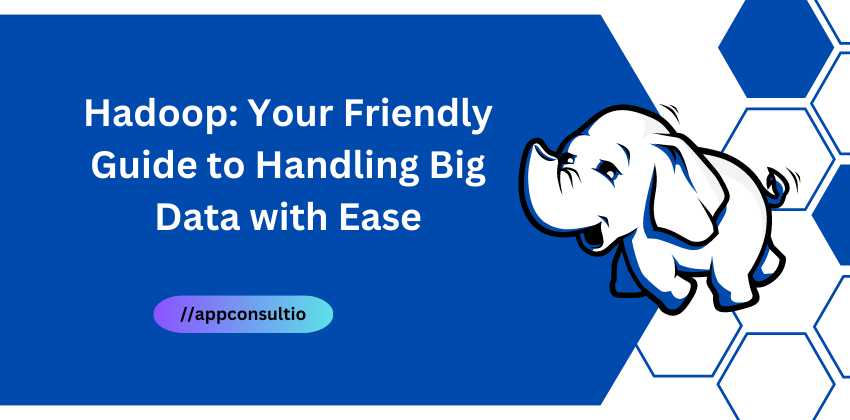
Hadoop is a helpful tool for dealing with large amounts of data. It's like a powerful friend who's great at organizing and processing lots of information. Originally made by smart folks named Doug Cutting and Mike Cafarella in 2005, Hadoop is open-source and uses a programming language called Java. It's used by big companies like Google, Yahoo, and Facebook, as well as Cloudera, Intel, and New York Times. They use it to work with tons and tons of data without any trouble.
Imagine you have a huge pile of data, like pictures, text, and numbers. Hadoop divides this big pile into smaller blocks, like puzzle pieces. Then, it spreads these pieces across many computers in a cluster group. If one computer stops working, Hadoop ensures the work keeps going on the others, so nothing is lost. Hadoop lets you work on these puzzle pieces simultaneously, making things fast. It's also good at keeping your data safe and ensuring it's always available when needed. People use Hadoop to run different tasks, like searching for specific things in the data or putting the data together in a certain way. And the best part is Hadoop makes all these tasks easy and fast.
The Hadoop Distributed File System (HDFS) is like a smart, super-sized filing system that works within the Hadoop framework. It's designed to handle lots of data and can run on regular computers. HDFS is tough and can handle mistakes, making it great for inexpensive hardware. HDFS is good at handling large files, like super big ones. It has a main boss called the Master NameNode, and lots of helpers called Slave DataNodes in a group. This team works together to make sure everything runs smoothly.
One of HDFS's coolest features is that it can fix itself when something goes wrong. This makes it a favorite among Big Data tools. It's open-source, which means people can use it however they want, and it's flexible. Without special rules, you can store all kinds of things in HDFS, like text, pictures, sounds, and videos.HDFS is super reliable, especially regarding hardware problems and dealing with lots of data. HDFS is all about giving different applications easy access to their data and works best when there's a lot to manage. It's like a big teamwork file system, ensuring all your data stays safe and organized. HDFS ensures data safety by making copies of the data on multiple computers. Imagine you have three copies of a really important document: two in the same room and one in a different room. This way, even if something goes wrong in one room, you still have the other copies.
By default, HDFS keeps three copies of your data. It's like having those three copies of your important document. And these copies are spread out on different computers, some in the same group and some in a different group. This helps if one group of computers has a problem; you still have the other copies safe and sound. HDFS is smart at finding out when something goes wrong and fixing it quickly. It's like having a team of experts who quickly solve any issues. This is a big part of how HDFS is designed. It was first created for a web search engine project called Apache Nutch.
HDFS has a leader (the NameNode) and a team of workers (DataNodes) who follow its instructions. A backup helper (Secondary) is also ready to jump in if needed. Together, they create a system that's strong and reliable. Like a team of superheroes, they ensure everything runs smoothly and your data stays safe and ready to use.
1) NameNode
Think of the NameNode as the big boss in the HDFS team. It's like the master who oversees all the work. This clever boss can manage a bunch of data nodes. The NameNode handles the distribution of data to these DataNodes. It's also like a super librarian who knows where every book is. It keeps track of important details about each file, like its name, where its blocks are, how big they are, and who's allowed to use it.
2) DataNodes
Data nodes are like the worker bees of the HDFS system. They're the ones who store the real data. When the NameNode tells them where to put stuff, they keep it safe. These data nodes are helpful. They give the data to clients or the NameNode when asked. They're like the friendly helpers who fetch books from the library shelves when you want to read them. DataNodes are also good at creating, deleting, and copying data blocks. They make sure everything runs smoothly.
3) Secondary NameNode
The Secondary NameNode is like a backup singer for the main boss, the NameNode. When the main boss needs a break, the Secondary NameNode steps in to help. But it's a special backup singer because it can't change the main song. It can only read words and notes. It watches and remembers what the NameNode does by keeping an eye on its notes and words (metadata) in files called fsimage and editing. It stores its notes in a temporary folder. Then, when the main boss returns, the Secondary NameNode gives its notes to the main boss, and the boss updates its song with the new notes. It's like a backup singer helping the main singer remember the lyrics.